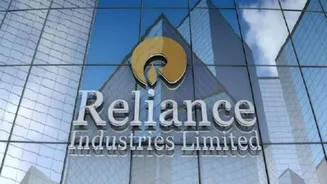Understanding the EDLI Scheme
The Employee Deposit Linked Insurance (EDLI) scheme is a crucial component of the Employees' Provident Fund Organisation (EPFO) framework, designed to
offer financial assistance to the family of an employee in case of their unfortunate demise while in service. This insurance scheme is automatically provided to all members of the EPFO, ensuring that eligible nominees receive a lump sum payment. The EDLI scheme operates without requiring any direct contribution from the employee; instead, the employer contributes a portion of the premium. This setup guarantees that a considerable sum of money is offered to the nominee. The EDLI scheme reflects EPFO's dedication to providing a safety net for employees and their families, offering crucial financial support during difficult times. The amount paid out is determined by the deceased's salary, and the claim procedure involves specific documentation to facilitate a smooth transfer of funds to the rightful beneficiaries. This scheme provides significant peace of mind, knowing that families have some form of financial support to cope during the challenging period following the loss of a loved one.
Eligibility Criteria Explained
Eligibility for the EDLI scheme is straightforward. All employees who are members of the EPFO are automatically enrolled in this insurance program. There is no need for any separate registration or application. The scheme covers employees working in establishments covered under the Employees' Provident Funds and Miscellaneous Provisions Act, 1952. This broad coverage makes the EDLI scheme accessible to a vast number of workers across various sectors in India. The only crucial factor is the employee's active membership in the EPFO. The benefits of the EDLI scheme extend to the legal heirs or nominees of the deceased employee, providing them with financial assistance. This comprehensive eligibility ensures that a wide array of employees are protected, regardless of their specific occupation or industry. The automatic enrollment removes the administrative hurdles for employees and ensures that they're shielded by this vital insurance cover. The simplicity of the eligibility criteria highlights the scheme's accessibility and its commitment to safeguarding the financial well-being of employees' families in times of distress.
Calculating Benefit Amount
The payout under the EDLI scheme is calculated based on the employee's salary in the last 12 months preceding their demise. The benefit amount is a multiple of the employee's average monthly salary. As per the latest regulations, the maximum benefit payable is INR 7 lakhs. In addition to this, a bonus of up to INR 2.5 lakhs may be granted under certain conditions, as determined by the EPFO. The salary considered for the calculation includes basic salary, dearness allowance, and retaining allowance. The scheme aims to provide a substantial financial cushion to the employee's family during a difficult period, and the benefit amount is determined to offer a reasonable level of support. The specific multiplier used to calculate the benefit amount can change periodically based on revisions made by the EPFO. It's always a good idea to stay updated with the most current guidelines. The calculation considers both salary and any additional bonuses, thus maximizing the financial assistance for the nominee. The goal is to provide a safety net that helps the family manage their immediate financial obligations and sustain during a tough time.
Filing an EDLI Claim
Initiating an EDLI claim requires the nominee to complete a specific process. First, the nominee needs to obtain and fill out the claim form, which is typically available from the employer or the EPFO portal. The claim form requires detailed information about the deceased employee, their employment details, and the nominee's information. The next essential step is to gather all the necessary documents to support the claim. The required documents include the death certificate of the employee, proof of the nominee's identity (such as Aadhaar card or PAN card), and proof of relationship with the deceased (such as a family certificate). Once the claim form is filled out and the supporting documents are assembled, the nominee must submit these to the employer. The employer then verifies the details and forwards the claim to the EPFO. Alternatively, the claim can also be submitted directly to the EPFO. Upon receipt of the claim, the EPFO will verify the information provided and, if everything is in order, proceed with the disbursement of the benefit amount. The claim process can take a few weeks. Prompt and accurate submission of all necessary documentation is vital to ensure a smooth and timely settlement.
Required Documents Checklist
Successfully claiming the EDLI benefit hinges on providing the correct documentation. A key requirement is the death certificate of the deceased employee, which serves as official confirmation of their demise. The nominee's identification proof is crucial; this typically includes documents like an Aadhaar card, PAN card, or any other government-issued ID. Proof of the relationship between the nominee and the deceased employee is also essential, this might include a family certificate, a marriage certificate (if applicable), or other relevant documents to validate the relationship. Additionally, a bank account details of the nominee (passbook copy or a cancelled cheque) are required to facilitate the electronic transfer of the benefit amount. If the employee was employed in an establishment covered by the EPF Act, the employer's verification and attestation of the claim form is also usually required. Accurate and complete documentation accelerates the claim processing, therefore it's crucial to gather and prepare all the necessary documents to expedite the claim settlement process. Missing or incorrect documents can lead to delays.
Common Claim Issues
While the EDLI scheme provides essential financial support, several issues can affect the claim process. One of the most prevalent is incomplete documentation. Failure to submit all the required documents, such as the death certificate, proof of identity, and relationship proof, can delay or even deny the claim. Another common issue is discrepancies in information. Any mismatch between the details on the claim form and the supporting documents, such as incorrect names or dates, can cause complications. Delays from employers in forwarding the claim to the EPFO can also slow down the process, causing unnecessary waiting for the nominee. Lack of awareness about the scheme and the required procedures can also result in problems. Many people may not know the exact steps to file a claim, leading to errors or delays. Addressing these potential issues is key to a smooth claim settlement. Nominees should ensure all documents are accurate and complete, follow up with the employer, and understand the scheme guidelines. Proactive planning and careful preparation can help to avoid such hurdles and ensure that the benefits are received efficiently.
Claiming Without Nominee
In situations where the employee has not nominated anyone for the EDLI benefits, the procedure for claiming the money differs slightly. In such cases, the funds are usually disbursed to the legal heirs of the deceased employee. The process will usually require the legal heirs to provide relevant documentation to prove their relationship with the deceased. This can include a succession certificate or a letter of administration issued by a court. A succession certificate is a document issued by a civil court to a legal heir, establishing their right to inherit the assets of the deceased. A letter of administration is a document issued by a court that grants the authority to administer the estate of a deceased person. The legal heirs are typically required to submit a claim form along with their supporting documents to the EPFO or the employer. The EPFO will then assess the documentation, verify the claims, and proceed with distributing the funds to the legal heirs. The absence of a nominee often means a more complex claim process, involving additional paperwork and legal procedures to determine the rightful beneficiaries of the EDLI benefit. Ensuring the required documentation is accurate and complete is critical to facilitate the claim process and ensure a timely settlement.














